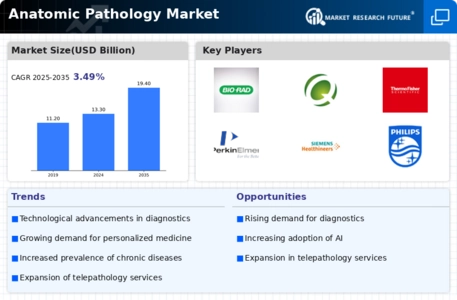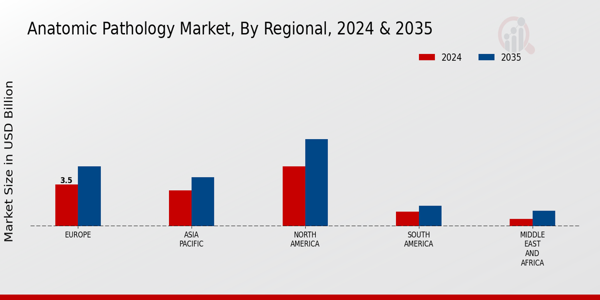Market Trends
Key Emerging Trends in the Anatomic Pathology Market
The growing need for testing services has a big impact on the Anatomic Pathology market. There is a greater need for accurate and fast lab reports to help doctors make decisions as the number of diseases increases.
Digital pathology is always getting better, which is what drives market trends. Digital pathology solutions, like whole-slide imaging and image analysis tools, make work more efficient, make it easier for doctors to speak with each other from afar, and help make diagnoses more accurately.
Using artificial intelligence (AI) in disease is a trend that stands out. Image analysis using AI algorithms helps doctors make faster and more accurate diagnoses and learn more about diseases and treatment choices.
In Anatomic Pathology, personalized treatment gets a lot of attention. Finding biomarkers and genetic traits through pathology is very important for making focused medicines and personalized treatment plans for each patient.
Cancer therapy is finding more and more uses for anatomic pathology. Molecular pathology and finding specific signs for cancer are getting better, which helps with more accurate diagnosis, prognosis, and choosing the right treatments.
New developments in immunohistochemistry methods are changing how the market works. Recent improvements in IHC methods, such as multiplexing and automation, give more thorough information about protein expression patterns, which helps identify tumors and other illnesses.
There are more and more telepathology options on the market. Telepathology lets doctors speak with each other from afar, work together, and get help from pathology experts in other places. This makes diagnosis more accurate and makes it easier for people to share knowledge.
More people knowing about health care, better facilities, and an understanding of how important pathology is in managing diseases all make the market more appealing, especially in developing countries.
In the field of anatomic pathology, quality control and standards are very important. To make sure that pathology findings are reliable and correct, people work hard to set up and follow quality assurance measures, standardized methods, and skill testing.
Histopathology is changing a lot because of automation. Automated tools for tissue preparation, labeling, and slide scanning make lab work more efficient, cut down on response times, and help make sure that results are always the same.
Workflows in anatomic pathology are starting to use next-generation sequencing (NGS) tools. NGS makes it possible to do full genome screening, which makes it easier to find genetic changes and helps doctors decide how to treat many illnesses, especially cancer.
Anatomic pathology is moving toward sharing and communicating with patients in a more patient-centered way. Making pathology reports clearer, giving patients easy-to-read outlines, and making it easier for pathologists and other healthcare workers to talk to each other all help patients understand and get involved.
The Anatomic Pathology market is still having trouble with a lack of workers. To deal with the lack of pathologists, people are working to improve education and training programs, use digital solutions, and look into ways that pathology services can be better delivered through collaboration.













Leave a Comment